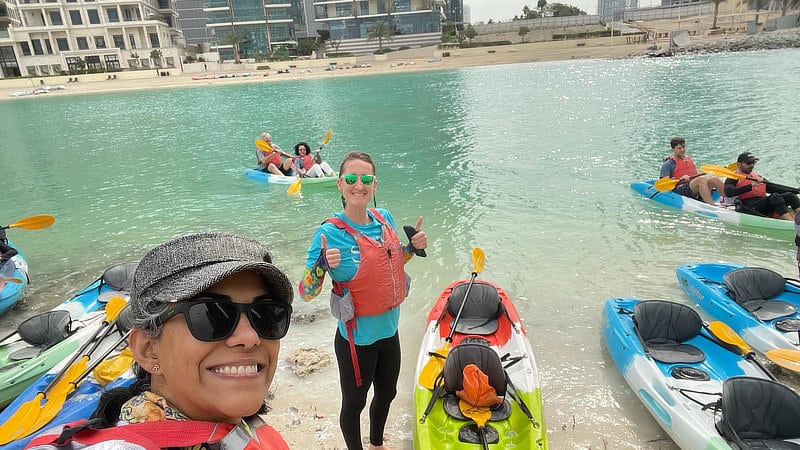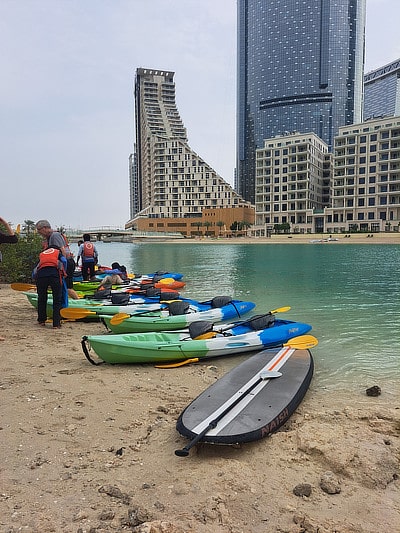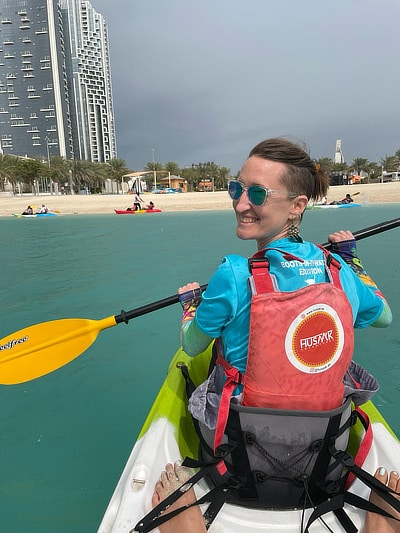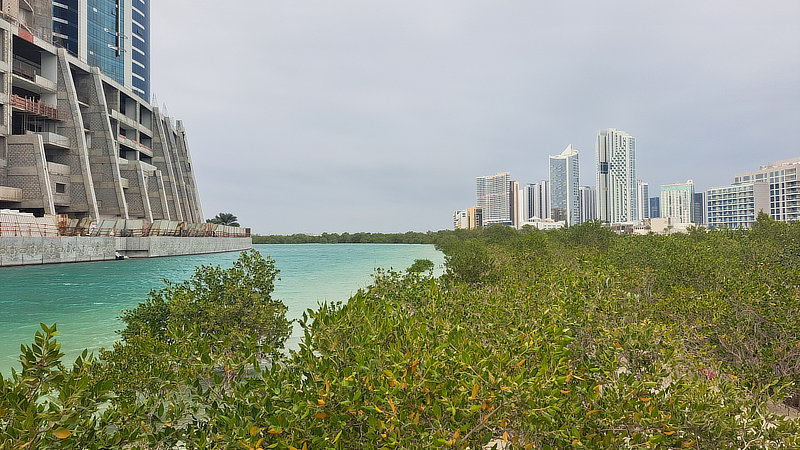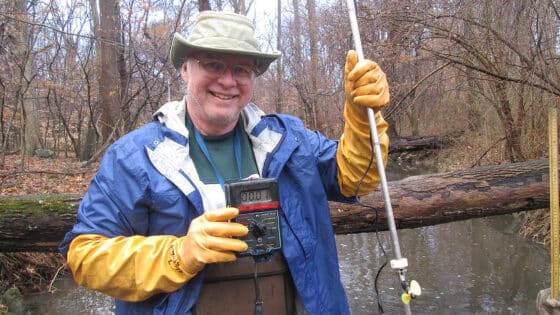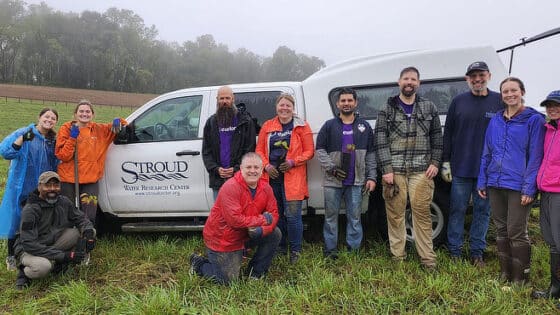What Stroud Center Educators Learned and Shared at an International Gathering to Address Environmental and Sustainable Development
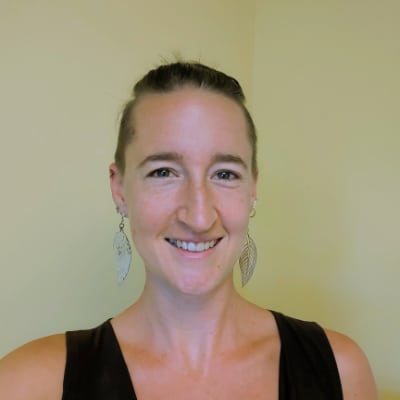
In February, I had the pleasure of presenting at the World Environmental Education Congress (WEEC) in Abu Dhabi. Held every two years in different parts of the world to spread and share knowledge, the congress addresses education for environmental and sustainable development.
Attendees included university professors, the youth prime minister of Uganda, zoo educators, a scuba diving business owner, kindergarten teachers, and more.
Sharing Web Tools for Environmental Modeling and Monitoring
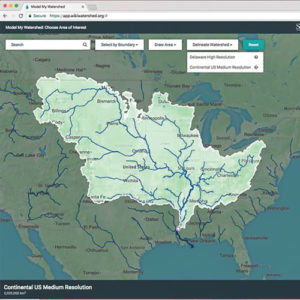
In Abu Dhabi, I met up with the Stroud Center’s longtime partner Nanette Marcum-Dietrich, Ph.D., a Millersville University professor who presented on a universal design for learning project in partnership with the Stroud Center. Marcum-Dietrich’s son, Ben, also presented at the youth portion of the congress on the Stroud Center’s own WikiWatershed Toolkit, focusing on Model My Watershed.
Among the highlights of the congress were inspiring stories from formal and nonformal educators working for environmental care and student development.
Sharing a Framework for Watershed Education
In my presentation “Meaningful Watershed Educational Experiences (MWEEs) Promote Outdoor Learning and Environmental Stewardship,”, I discussed the MWEE framework for hands-on learning, taking civic action, and the Stroud Center’s work to create and teach in outdoor learning spaces.
Learning How “Risky Play” Can Help Students Develop Important Skills
One of my biggest takeaways from this conference came from a Swedish kindergarten teacher who discussed the benefits of risky play — engaging students, particularly young students, in outdoor activities like rock climbing and boating that involve elements of risk. She explained that this sort of play, which is common in Sweden, increases student confidence and competence. When climbing a cliff, students practice decision-making and have to make their own judgment calls as they move up a path.
Educators from other countries, including myself, expressed surprise, sharing that risky play was typically avoided in their countries. We discussed, though, that by learning safety techniques before engaging in such play, students can develop problem-solving and risk-assessment skills. The supervising adult is not telling students to “be careful” or to stop a risky activity but rather encouraging them to experiment and push themselves through uncertain situations, letting the students lead their own adventures.
In Sweden and other countries where risky play is practiced, students learn critical-thinking skills that are crucial to their development.
At the Stroud Center, our education programs include outdoor activities such as canoeing and stream studies that can employ these techniques.
Taking to the Water
At the end of the week, we engaged in some risky play ourselves: Friday field trips included mangrove monitoring, a trip to SeaWorld, and kayaking. I joined 19 other conference-goers to kayak offshore around a restored mangrove area and pick up trash. The stark contrast between construction projects pushing right up to the waterline and the built mangrove island was a dramatic example of the country’s effort to balance human impact on the area with environmental care and restoration.
Sharing ideas for how to approach education with people from around the world was an incredible experience that provided me with many new ideas, contacts, and fuel to bring back to programming at the Stroud Center.

